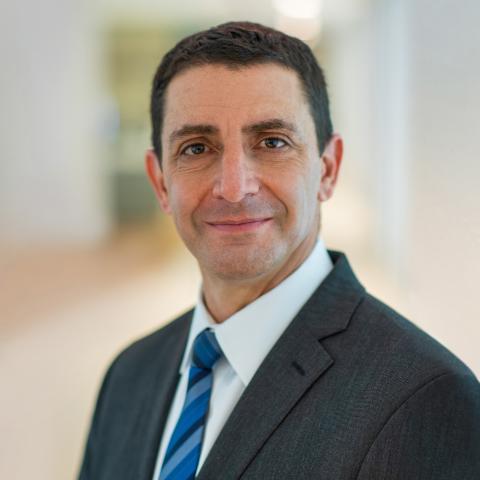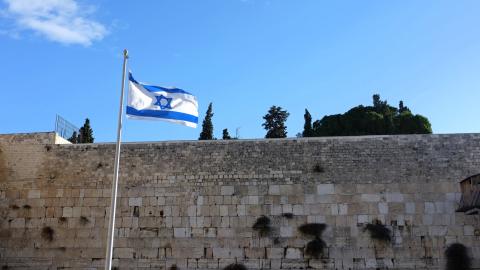Celebrating Hanukkah both commemorates a particular hard-fought battle for Jewish religious freedom and is itself an expression of that freedom in most of the places where Jews live today.
The significance of Hanukkah has evolved over the past century. The story of the miraculous Jewish victory over a foreign army to regain sovereignty in the Land of Israel and to restore worship at the Temple in Jerusalem holds obvious resonance for Israeli Jews and for Zionists of all faiths everywhere. In the West, the timing of Hanukkah also allows Jews to take part in the cheer of the Christmas holiday season with a festival uniquely their own.
Yet Hanukkah is also an opportunity to reflect on ominous threats in the United States, where Jews remain the target of more than 50 percent of reported religiously focused hate crimes, despite accounting for only around 2 percent of the population, and where they are demonized by racists and even by anti-racists.
It is common practice to classify antisemitism in the United States by motive. Though most antisemitic acts can be identified as right-wing, left-wing, Islamist, Palestinian nationalist or Black Hebrew Israelite, antisemites are disturbingly diverse. Some people, even admired pop culture icons, are simply hateful.
Considering antisemitism’s motives is important in the politically tribal atmosphere prevalent in America. Many have noted that adherence to antisemitic beliefs is where the far-left and the far-right appear to overlap—what is known as the “horseshoe” model.
Nevertheless, examining antisemitism’s manifestations in addition to its motives yields useful insights. Two categories stand out.
The first includes the broad spectrum of physical threats to Jews and Jewish institutions. Among the most familiar recent examples: the shooting attacks at the Tree of Life Congregation in Pittsburgh and the Chabad of Poway, California synagogue (right-wing); the hostage-taking of a rabbi and congregants in Colleyville, Texas, and the threat last month that led to a law enforcement warning to synagogues across New Jersey (Islamist); and the shooting attack in a Jersey City kosher supermarket (Black Hebrew Israelite). These are just some of the gravest incidents on a long list that includes many more occurrences of assaults on Jews and vandalism and arson at synagogues, schools and other Jewish institutions across the country.
Addressing these threats is why Jewish leaders spend time and energy debating the balance between the security and openness of their institutions, why armed security is the norm at Jewish schools, and why dedicated organizations are now helping communities harden their facilities and training personnel to contend with hostage takers, active shooters and bomb threats. The need to provide such physical security is outrageous. Doing so is difficult and carries significant social, psychological and financial costs, but it is a longstanding and, for the most part, manageable fact of Jewish life worldwide.
The second category is less immediately recognizable and, in many ways, harder to fight. It is less focused on Jews’ physical security and instead seeks to undermine their social, academic and employment security. This is the antisemitism that—at a time of peak identity politics on- and off-campus—seeks to intimidate Jewish college students and faculty from expressing their Jewish identity, including voicing their support for Jewish self-determination. Often hiding behind the euphemism of “anti-Zionism,” this antisemitism is primarily of left-wing provenance and is most prevalent at institutions that have become “safe spaces” for bigots instead of the strongholds of free speech and the exchange of ideas they are meant to be. Though the country’s elite universities are not reimposing quotas on Jewish students, the on-campus efforts to silence Jews from Berkeley and USC to Tufts and SUNY is nevertheless an ironic and tragic regression to a darker time not so long ago in American history.
Countering the latter type of antisemitism is not as simple as installing metal detectors and vehicle barriers. It requires Jews to stand up for themselves and to build alliances with others who understand that these phenomena pose a threat not only to Jews, but also to higher learning and to American society as a whole.
These two categories of antisemitism share a common desire to impose unbearable costs on American Jews’ exercising of their most fundamental rights —speech, assembly, worship. Among their adherents, some would deny Jews the right to life and liberty, and some deny that the Jewish people have the right to self-determination.
The various types and tactics of antisemitism have something else in common: They should be fought together. Far too many are willing to name and shame the antisemitism of their political rivals while downplaying or even excusing the antisemitism of those in their own camp. The best way to challenge antisemitism is to do so with vigor and consistency, regardless of its source or expression and despite the discomfort of doing so against one’s in-group.
In steeling ourselves for the ongoing fight against antisemitism, Hanukkah reminds us also that the Maccabean Revolt took years to succeed and was marked by smaller victories and defeats throughout. The religious and political freedom it restored proved to be temporary. While the meaning of the holiday has evolved, perhaps Hanukkah’s most important and enduring lesson is that for the Jewish people, maintaining freedom can be as great a struggle as achieving it.

















